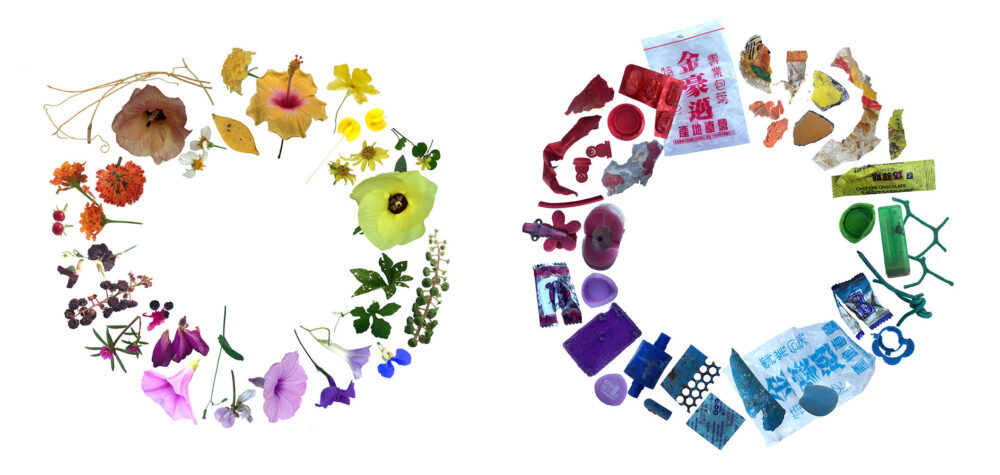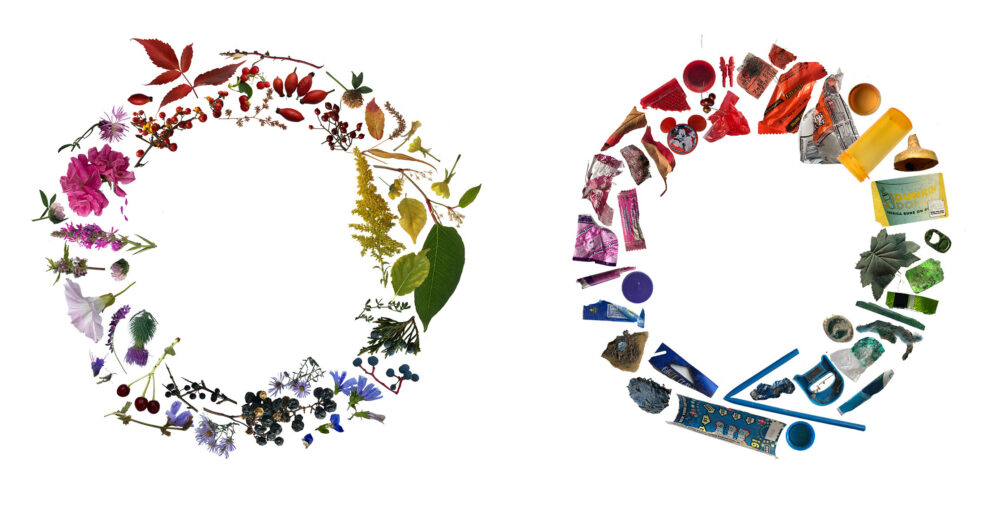
Digital photo collage and archive of found objects
Dimensions variable

Digital photo collage and archive of found objects
Dimensions variable

Digital photo collage and archive of found objects
Dimensions variable
The pieces in the series Comparative Color Spectrums explore the divergent origins of two sources of bright color found in hyperlocal watersheds in different urban, suburban, and rural contexts around the world. The colors displayed in the plants on the left evolved over generations of coevolution between plants, pollinators, and their habitats. The color they contribute to the landscape is ephemeral, but also cyclical and thus enduring. On the right is a collection of human-made artifacts found in and among fields of spring wildflowers. Colors used for flagging, signage, snack packages and beverage containers come in a range of vibrant hues. These objects have been designed by humans to attract the human eye, but fade and degrade quickly when exposed to the sun. They loose their original purpose, but remain in the landscape as they fall apart into smaller and smaller pieces of synthetic matter. Both sets of objects add to the visual complexity of the landscape, and tell a complex story of place, time, and infrastructure in a changing climate.